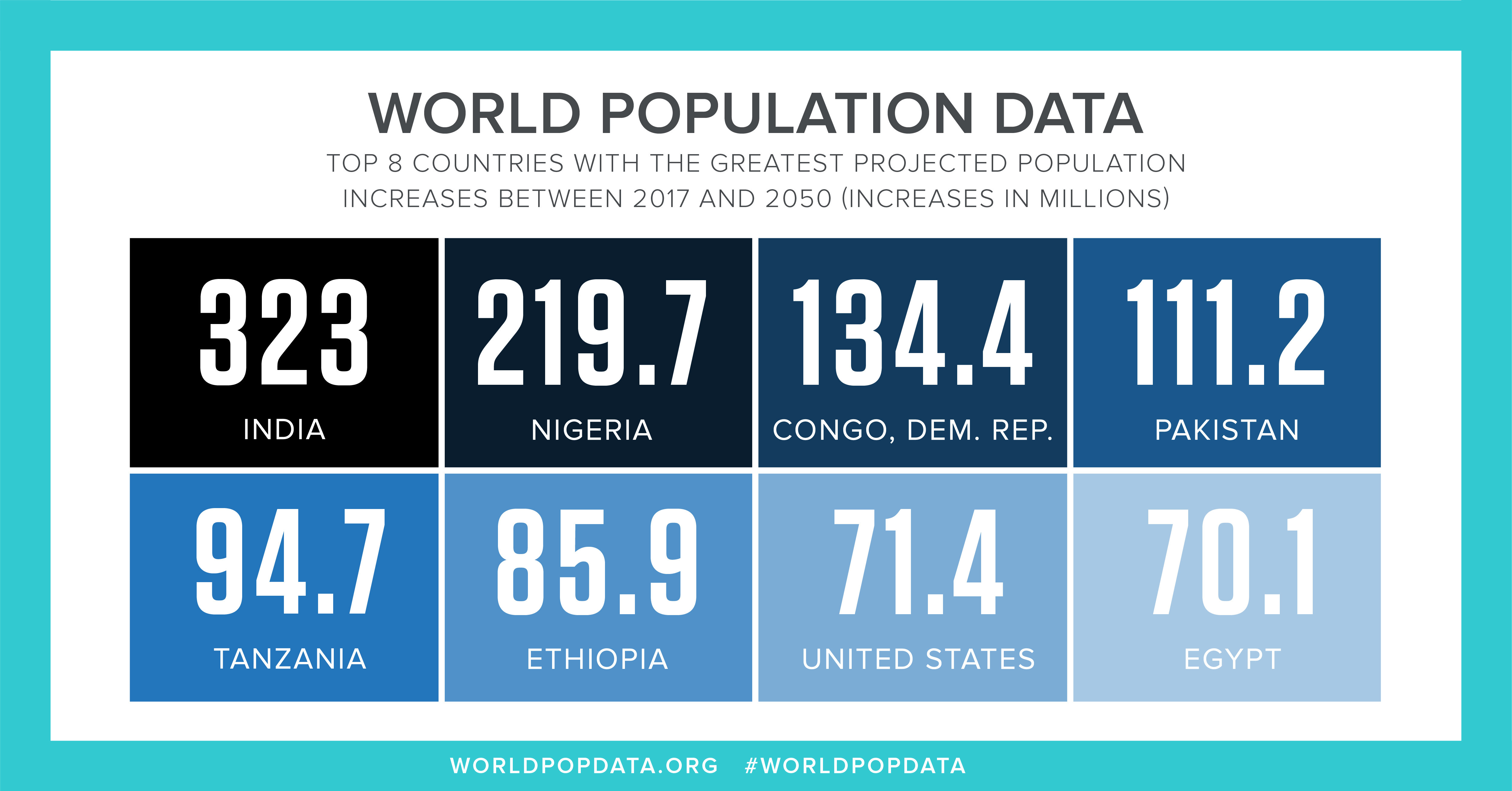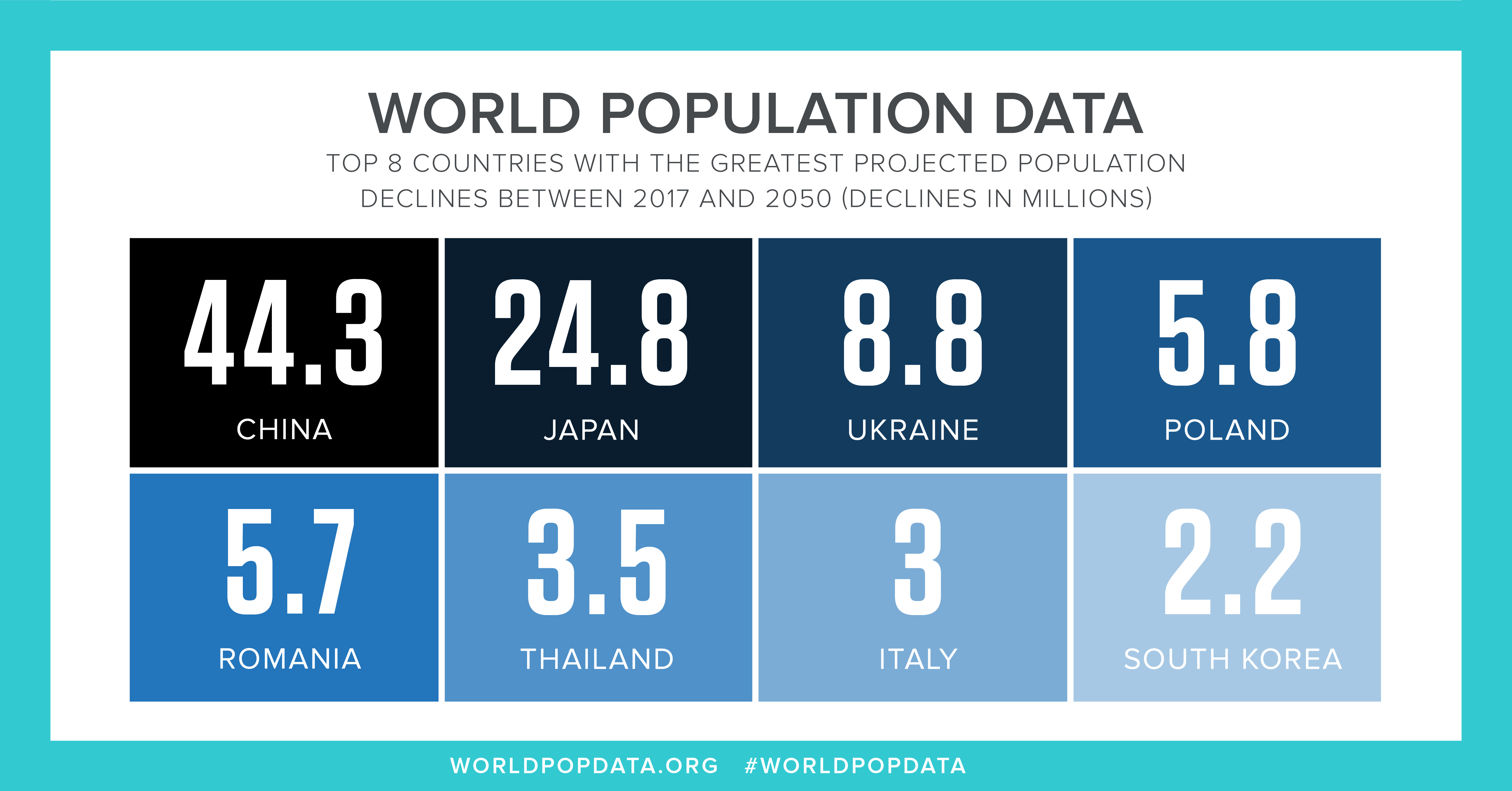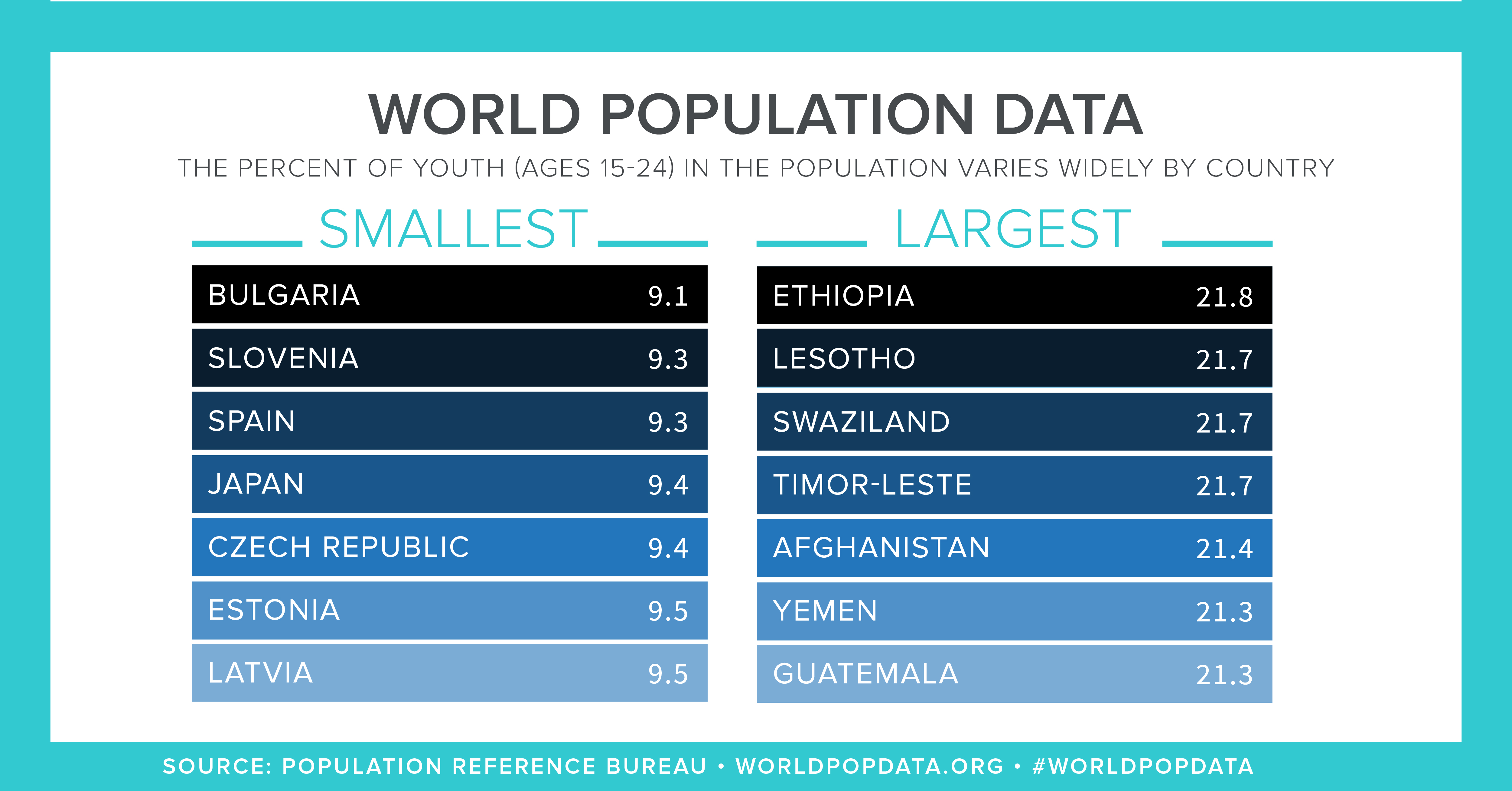PRB Projects 2050 World Population at 9.8 Billion,
Youth Population to Reach 1.4 Billion
The world population will reach 9.8 billion in 2050, up 31 percent from an estimated 7.5 billion now, according to projections included in the 2017 World Population Data Sheet from the Population Reference Bureau (PRB).
This edition of the annual Data Sheet, also shows a worldwide total fertility rate (TFR, or average lifetime births per woman) of 2.5. The three countries with the highest TFRs are Niger (7.3), Chad (6.4), and Somalia (6.4), while there is a five-way tie for the lowest TFR (1.2) among Bosnia-Herzegovina, Romania, Singapore, South Korea, and Taiwan.
PRB’s 2050 projections show Africa’s population will more than double to 2.6 billion by 2050 and account for more than half (57 percent) of the global population increase by that date. The number of people in Asia will rise about 750 million to 5.2 billion, while Europe (including all of Russia) is headed for a population decline from 745 million to 736 million. The Americas population is seen increasing to 1.2 billion from 1 billion now, and Oceania (which includes Australia and New Zealand) would rise from 42 million to 63 million.

PRB’s widely referenced Data Sheet has been produced annually since 1962. This year’s edition provides the latest data on 17 key population, health, and environment indicators for the world, major regions, and more than 200 countries. This Data Sheet’syouth focus features nine special indicators and several analytical graphics exploring the state of the world’s youth, defined as people ages 15 to 24.

The Data Sheet’s midcentury population projections indicate that:
- India will become the world’s most populous country with 1.7 billion people, with China in second place at 1.3 billion. Currently China is at 1.39 billion, compared with 1.35 billion in India.
- India will also register the largest numerical increase in population of any country, adding 323 million people by 2050. Nigeria will post the second-largest rise at 220 million, followed by Democratic Republic of Congo at 134 million.
- Thirty-nine countries will have smaller populations in 2050 than in 2017. China will register the largest numerical population decrease of 44 million, followed by Japan at 25 million and Ukraine at 9 million.
- The population of 30 countries, nearly all in Africa, will at least double by 2050.
- The population of the United States will be 397 million, up from 325 million today.
Can Youth Develop Their Potential?
PRB compiled statistics to measure whether youth are well-positioned to develop into productive adults, based on health, education, and other factors. The Data Sheet includes indicators for secondary and tertiary school enrollment, adolescent fertility rates, rates of HIV/AIDS among youth, youth population figures for 2017, and youth population projections for 2050. A few key figures are:
- The world youth population (ages 15 to 24) is projected to rise to 1.4 billion in 2050 from 1.2 billion now but the youth share of world population will fall to 14 percent from 16 percent.
- Africa’s youth population will rise to 35 percent of the world youth total in 2050, from 20 percent today.
- Ethiopia currently has the highest share of youth population at 21.8 percent while Bulgaria has the lowest share at 9.1 percent.
- The global adolescent fertility rate (ages 15 to 19) is 50 births per 1,000 women, compared to only 16 per 1,000 in more-developed countries and 54 per 1,000 in less-developed countries.

The analytical features focusing on youth explore the extent to which youth are engaged in productive activities (such as education, employment, or training) in the United States and globally, the prevalence of modern family planning use among young married women, HIV/AIDS rates among African youth, the prevalence of behaviors among youth that can lead to noncommunicable diseases, and in the digital edition, level of access by youth to information and communication technologies.






